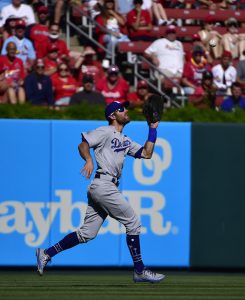TODAY: Kershaw’s MRI didn’t reveal any serious damage, Dodgers manager Dave Roberts told The Athletic’s Fabian Ardaya (Twitter links) and other reporters. As Roberts put it, this is the “best-case scenario” for Kershaw’s injury, though the southpaw also received an epidural injection in his back. A timetable still isn’t known for Kershaw’s return.
AUGUST 5: The Dodgers announced they’ve placed Clayton Kershaw on the 15-day injured list, citing low back pain. Utilityman Chris Taylor is back from his own IL stint to take the vacated active roster spot. Los Angeles also recalled reliever Reyes Moronta from Triple-A Oklahoma City and optioned outfielder James Outman.
Kershaw lands on the IL for the second time this season. He lost around a month between early May and June with inflammation in his right hip area. The future Hall of Famer returned and went on to make ten more starts before yesterday’s outing. After throwing four innings of two-run ball in an eventual win over the Giants, Kershaw went out to the mound for his warm-up tosses to start the fifth. He pulled himself from the game after experiencing some pain in his lower back, and that issue will apparently keep him out of action for at least the next few weeks.
The team hasn’t provided a timetable on Kershaw’s return, and the announced diagnosis of “low back pain” remains nebulous. They’ll surely be cautious with the 34-year-old, particularly since he’s landed on the injured list at least once in each season since 2016. That included stints for back issues every year between 2016-18. With a 12 1/2 game lead over the Padres in the NL West, the Dodgers can feel comfortable playing things slowly with key players for the final couple months.
While Kershaw no longer takes on the kind of workloads he did during his prime, he’s still among the sport’s best pitchers on a rate basis. Through 85 1/3 innings this season, the three-time Cy Young winner carries a 2.64 ERA with an above-average 26.2% strikeout rate and 48.5% ground-ball percentage. Kershaw’s fastball is sitting in the 90 MPH range, but he owns arguably the game’s best command and hasn’t walked more than 6% of batters faced in a season for a decade.
Kershaw’s trip to the IL leaves Julio Urías, Tony Gonsolin, Tyler Anderson and Andrew Heaney as the rotation’s top four for the time being. Ryan Pepiot and Michael Grove are depth options at Triple-A, and the club seems likely to welcome hard-throwing righty Dustin May back in the not too distant future. Manager Dave Roberts told MLB Network Radio on SiriusXM this afternoon that May is likely to return by the club’s August 19-21 series against the Marlins (Twitter link). The 24-year-old has been out all season recovering from May 2021 Tommy John surgery, but he’s been on a rehab stint since mid-July. Roberts indicated he’s likely to make two more starts in Oklahoma City before returning to the big league club, although he left open the possibility May rejoins the MLB team after just one more Triple-A appearance.
Taylor makes his return to the starting lineup, exactly a month after fracturing his left foot. It’s a quick bounceback for an injury of that magnitude, and Roberts suggested he’ll get the nod at second base tonight. It’ll be Taylor’s first infield appearance of the season, as he’s worked exclusively on the grass this year. Taylor has logged 502 innings in left field, along with 57 and 56 frames in center and right, respectively.
Of course, Taylor made a name for himself with his defensive flexibility in previous seasons. He’s capable of playing virtually everywhere on the diamond other than catcher, and it seems the club is content to get him back onto the infield on occasion. Gavin Lux and Trea Turner make for an excellent middle infield duo, with Max Muncy playing primarily third base as Justin Turner landed on the IL on Tuesday. Taylor will presumably spend the bulk of his time in the outfield still, but the ability to log some action on the dirt will allow Roberts more flexibility in managing infield reps. The 31-year-old will try to get going offensively after his month away, as he carries a .238/.319/.409 line with a huge 35.4% strikeout rate across 285 plate appearances on the year.

